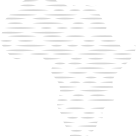We all enjoy having access to clean water and fresh air, but how often do we think about the natural systems that provide these goods and services to us on an ongoing basis? From insect pollinators ensuring our crops grow to the African savannas that remove carbon dioxide from the atmosphere, functioning ecosystems provide goods and services that ensure human wellbeing. Biodiversity supports the production of these goods and services and is critical for the existence of ecosystems. As human pressure causes increasing decline in the state of the natural world, the future of humankind is increasingly at risk. How much biodiversity can we afford to lose before we start to feel an impact?
The Miombo woodlands of southern Africa span from Mozambique to Angola, covering 2.4 million square kilometres. The woodlands sustain more than an estimated 150 million people by providing food and raw materials, thus contributing to food security and poverty reduction. If managed sustainably, the woodlands can buffer the effects of climatic or economic catastrophes, support natural resources and prevent land degradation. Similarly, although mangroves are found only in tropical coastal areas, they provide approximately US$1.6 billion in ecosystem services every year. They are home to diverse fauna, from monkeys to molluscs, and serve as nurseries for fish. For humans, their benefits include protection against extreme weather events, the delivery of necessities such as food and fuel, and the provision of livelihoods through fishing and tourism. But their value goes beyond the local communities they serve – studies indicate that mangroves are among the most valuable carbon sinks on the planet, and are a critical combatant in the global fight against climate change.
Mangroves and the Miombo woodlands and are just two examples that reveal how ecosystems are essential to our well-being. Ecosystems with rich biodiversity supply the provisions necessary for our everyday lives, offer employment opportunities and livelihoods, and provide spaces for recreational, cultural and spiritual activities. They regulate the environments in which we live; filtering pollution, pollinating crops, protecting us from natural hazards and climatic changes, and giving us clean air to breathe and water to drink. They are necessary for the continued existence of a diversity of life on Earth. We may take these benefits for granted, but without them, there are real consequences for the future of humanity.

Biodiversity loss has a knock-on effect on ecosystem function. Take the African elephant, which is under threat from poaching, human-wildlife conflict, and habitat loss. Elephants create gaps in vegetation that allow new plants to grow and act as pathways for smaller animals. They enable seed dispersal, which ensures food for other animals, as well as plant diversity, including trees that store carbon in their trunks and roots, helping to mitigate the effects of global warming. With the future of the species at risk, the ecosystems that depend on elephants are in jeopardy too. As African icons, elephants attract tourism, boosting economic opportunities for local communities.
One of the biggest and most immediate threats to biodiversity is change in how people use land. It is estimated that land uses such as agriculture, livestock grazing, timber plantations and urbanization have already reduced average local species richness around the world by 13.6% and the total abundance of species by 10.7% over the past few centuries. These losses have surpassed the planetary boundary of 90% biosphere integrity, impacting the ability of ecosystems to function and provide us with critical ecosystem services.
Many African livelihoods are directly dependent on natural resources, including mining, agriculture, fishing and forestry. As land cultivation, open-cast mining, deforestation, forestry and urbanization expand to support development, natural habitat is being lost. In Uganda and Tanzania, for example, mammal species richness is reportedly lower in cultivated areas than rangelands, as habitat loss shrinks indigenous plant abundance, indirectly affecting wildlife species. With habitat and species loss, ecosystems lose the ability to function, self-regulate or heal.
In mixed-use landscapes, human-wildlife conflict can further threaten species diversity, as farmers and pastoralists compete with indigenous animals for natural resources. In addition, wildlife migratory paths and corridors are disrupted by land conversion and fencing.
Land uses such as extensive rangelands or smallholder croplands impact biodiversity far less than intensive land use such as mining, monocultures, or urbanization. Integrated landscape approaches, such as agroforestry, can play an important role in ecosystem maintenance while also providing livelihoods. Wildlife-based land uses, such as ecotourism and hunting, can conserve biodiversity while also creating local economies.
If we are to navigate our continent’s socio-economic needs without putting species like the elephant and the ecosystems that support and are supported by them at risk, we need transformative governance and policies that promote the conservation of biodiversity and associated ecosystem services while also supporting sustainable development. For this, we require scientific information that captures how human activity impacts biodiversity.
To assess how land-use change and other human activities in Africa are affecting biodiversity, this project is convening African biodiversity experts to integrate their knowledge into a Biodiversity Intactness Index (BII). BII scores reflect how all native species populations have been affected by human land uses and related activities in a region. This crucial information will guide decision-makers in future development strategies.
Without governance that recognizes the role of biodiversity in sustainable development, species populations will become even smaller and more fragmented across the continent. The resultant decline in healthy ecosystems and the services they provide could be catastrophic for humanity. By growing our understanding of the interactions between humans and nature, and how changes in biodiversity affect ecosystem services and in turn our well-being, we can truly value what we may be losing. From policymakers to the public, we can navigate development in ways that prevent environmental degradation and promote a just, sustainable future for all.






